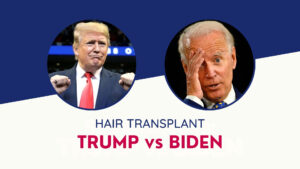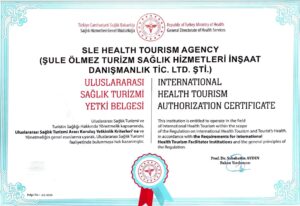Long-Lasting Hair Restoration with FUE and DHI Hair Transplants
Are you seeking a long-lasting solution for hair loss? With advancements in hair transplant techniques, options like Follicular Unit Extraction (FUE) and Direct Hair Implantation (DHI) provide excellent results. In this article, we will explore the durability of these techniques and the factors that influence long-lasting hair restoration. Whether you’re considering FUE or DHI, understanding their benefits and aftercare tips can help you achieve natural-looking, sustainable hair growth.
Part 1: FUE Hair Transplants – Ensuring Long-Lasting Results
Follicular Unit Extraction (FUE) is a leading hair transplant method known for its ability to provide long-lasting results. By individually extracting hair follicles from the donor area and transplanting them into areas experiencing hair loss, FUE offers a natural-looking and durable solution. Patients who opt for FUE can enjoy the benefits of restored hair without the worry of linear scars associated with traditional methods.
FUE hair transplants involve the following key steps:
- Donor Hair Extraction: Hair follicles are carefully extracted one by one from the donor area using specialized instruments. This process ensures minimal damage to the surrounding hair and allows for a seamless and natural appearance post-transplant.
- Recipient Site Creation: Tiny incisions are made in the recipient area, where the transplanted hair follicles will be placed. The angle, direction, and density of the incisions are crucial for achieving natural-looking results.
- Hair Follicle Implantation: The extracted hair follicles are meticulously placed into the recipient sites, following the predetermined pattern to ensure proper alignment and natural hair growth.
- Post-Transplant Care: After the procedure, patients receive detailed instructions on post-transplant care. This includes guidelines on cleansing, medication, and protecting the transplanted area to promote healing and maximize the longevity of the results.
Part 2: DHI Hair Transplants – Pioneering Longevity
Direct Hair Implantation (DHI) is a cutting-edge hair transplant technique that takes the durability factor to new heights. With the Choi Implanter Pen, DHI allows for simultaneous extraction and implantation of hair follicles, reducing the time they spend outside the body. This advanced approach enhances the survival rate of transplanted hair follicles, resulting in long-lasting and impressive outcomes.
DHI hair transplants involve the following key steps:
- Donor Hair Extraction: Hair follicles are extracted directly from the donor area using the Choi Implanter Pen. This pen-like device has a hollow needle that simultaneously extracts and implants the hair follicles, minimizing the time they spend outside the body.
- Graft Preparation: The extracted hair follicles are carefully inspected, sorted, and prepared for implantation. This step ensures that only the healthiest and most suitable follicles are used for transplantation.
- Implantation Process: The prepared hair follicles are implanted directly into the recipient area using the Choi Implanter Pen. This tool allows for precise placement of the follicles, controlling the depth, angle, and direction to achieve natural-looking results.
- Post-Transplant Care: Similar to FUE transplants, post-transplant care is essential for maximizing the longevity of the results. Patients receive specific instructions on how to care for their transplanted hair, including cleansing, medication, and protecting the scalp from sun exposure.
Part 3: Factors Influencing Longevity of Hair Transplants
Several factors play a crucial role in determining the longevity of hair transplants. Understanding and addressing these factors can help individuals achieve the best possible outcomes. Key factors include:
- Quality of Donor Hair: The quality and health of the donor hair significantly impact the longevity of the transplant. Optimal hair follicles from a healthy donor area ensure better growth and durability.
- Surgeon’s Skill and Expertise: The expertise and experience of the surgeon performing the transplant are instrumental in ensuring a successful and long-lasting outcome. A skilled surgeon will meticulously handle the extraction and placement of hair follicles, maximizing their viability and growth.
- Post-Transplant Care: Following proper aftercare instructions is vital for maintaining the longevity of the hair transplant. This includes gentle handling of the transplanted hair, adherence to the recommended cleansing routine, protection from excessive heat or sun exposure, and using prescribed medications to promote healing and growth.
- Individual Factors: Each individual’s unique characteristics, such as their overall health, age, and genetic predisposition, can influence the longevity of the transplant. It’s important to have realistic expectations and understand that individual results may vary.
Table: Factors Influencing Hair Transplant Longevity
| Factors | Explanation |
|---|---|
| Quality of Donor Hair | The quality and health of the donor hair significantly impact the longevity of the transplant. |
| Surgeon’s Skill | The expertise and experience of the surgeon performing the transplant are crucial. |
| Post-Transplant Care | Following proper aftercare instructions is vital for maintaining the longevity of the hair transplant. |
Part 4: Essential Aftercare for Long-Lasting Results
Proper aftercare is crucial for long-lasting hair restoration. Here is a step-by-step guide on essential aftercare tips to maintain the durability of your restored hair:
How to Take Care of Your Transplanted Hair:
- Follow Post-Surgical Instructions: Adhere strictly to the post-operative care instructions provided by your surgeon. This includes guidelines on washing frequency, applying topical solutions, and avoiding certain activities during the initial healing period.
- Handle with Care: Treat your transplanted hair and scalp gently. Avoid excessive brushing, combing, or pulling. Use a soft brush or wide-toothed comb to prevent damage to the transplanted hair follicles.
- Protect from the Sun: Shield your scalp from direct sunlight by wearing a hat or using sunscreen with a high SPF. Protecting your scalp from harmful UV rays helps maintain the health and longevity of the transplanted hair.
- Maintain a Healthy Lifestyle: Adopt a healthy lifestyle by eating a balanced diet, staying hydrated, exercising regularly, and managing stress effectively. Good overall health promotes hair growth and contributes to the longevity of the transplant.
Is a Hair Transplant Permanent?
One common question that arises when considering a hair transplant is whether the results are permanent. While a hair transplant can provide significant and long-lasting improvements, it’s essential to understand the nature of the procedure and how it affects hair growth over time.
After your hair follicles are grafted into areas where your hair is thinning, the healing process begins. It’s normal for some of your hair to fall out within the first three months following the procedure. Over the next 6 to 12 months, the skin gradually heals, allowing the transplanted follicles to establish themselves.
Once the healing process is complete, the transplanted follicles start to grow hair that fills out the bald patches on your scalp. This newly grown hair will continue to grow naturally as you age. However, it’s crucial to note that the movement of the transplanted hair follicles is permanent. They cannot be returned to their previous position.
While the transplanted hair follicles initially produce healthy hair, it’s important to understand that, like the rest of your hair follicles, they have a natural lifespan. Over time, some transplanted follicles may gradually produce less hair than they used to. This process is influenced by various factors, including genetics, age, and overall health.
Although the transplanted hair is permanent and won’t experience the same type of hair loss as before the procedure, it’s essential to manage expectations. Ongoing hair care and maintenance may be necessary to ensure the best possible long-term results.
By understanding the nature of a hair transplant and its effects on hair growth, individuals can make informed decisions and adopt appropriate measures to optimize the longevity of their transplanted hair.





